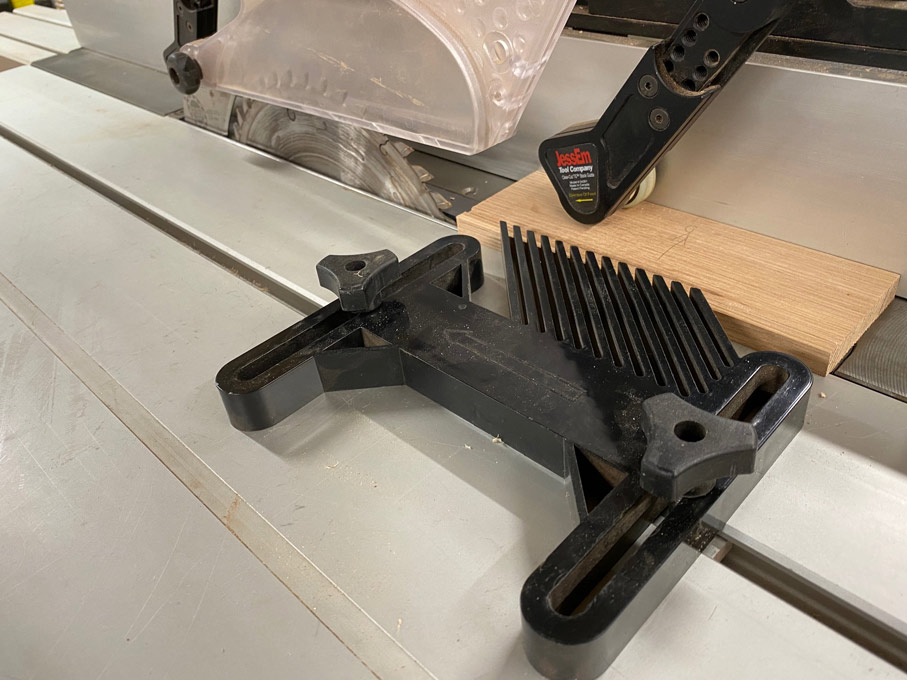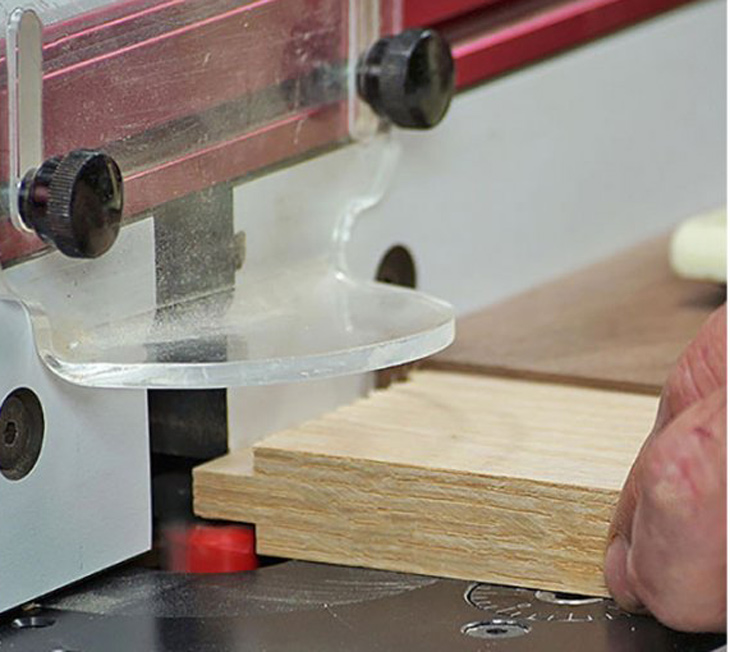Back
to Powered Tools and Machinery
No
mitre gauge track!
A router
table is a wonderful resource. However, a good router table does not
need to be complex. In fact, I much prefer the KIS principle. My
first router table was simply a piece of MDF with a hole for the bit.
The fence was a 2x4 clamped alongside. It did good work. While this
latest router table has many bells and whistles, it is still
relatively simple compared to many.
This is my solution for a
mitre track ...
There are two reasons to have a mitre track.
The first is to attach a feather board. As I mentioned earlier, the
JessEm guides do the task of holding the workpiece both down and
against the fence. If the JessEm is not sufficient, I can still
attach a feather board.
I was using a feather board on the
table saw today to size drawer backs ...

The
feather board can do double-duty at the router table. I drilled and
tapped four bolt holes in line with the centre of the table ...

The
feather board can slide back-and-forth when bolted this way. It can
reach to the fence ...

The
forwards holes are where a mitre track would go. This is as far back
as it would extend if in a mitre track ...

However,
the second set of holes allow for a wider range ...

The
second reason for a mitre track is to use a mitre gauge to either
rout out tenon cheeks, or joints such as cope-and-stick frames or box
joints. There are alternate solutions for these.
The main
issue I have with the mitre gauge method is that it requires that the
fence be parallel to the mitre track. Fences are rarely so in my
experience. The closest I came to this was when I had a router table
in a previous table saw, and it shared the table saw fence (which
tracked parallel to the blade). This is not the case now. The fence
rides unequally in tracks, and one side is moved to fine adjust the
setting. In short, a mitre track is useless.
To make a tenon
cheek, or cope the end of a stretcher for a cope-and-stick joint,
simply use a backing board against the fence ...

This
will not make box joints. In reality, for myself, it is unlikely that
I would ever make box joints. I just cannot see a need. The closest
is a dovetail joint, and I prefer doing these with hand tools. Still,
were I to make a box joint, the accessory of choice would be a linear
fence. These are easy-enough to build ...

Here is
an excellent video on YouTube building a linear fence
....
https://youtu.be/DCTmrLgaGVg
Regards
from Perth
Derek
February
2021






